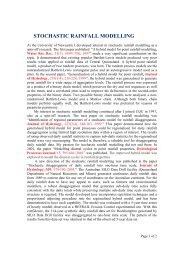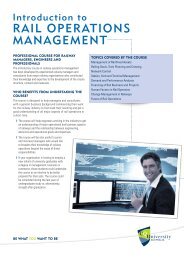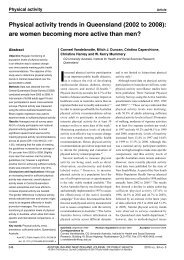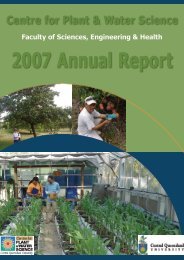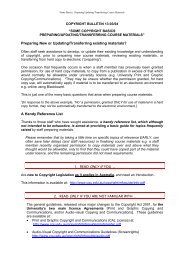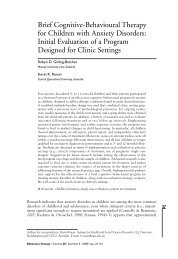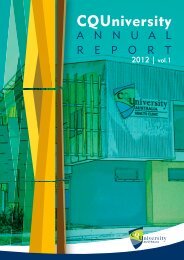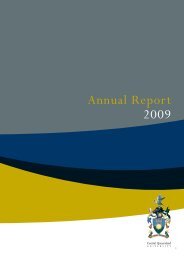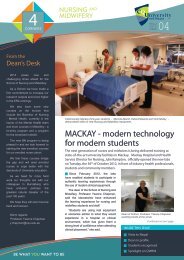Centre for Plant & Water Science - Central Queensland University
Centre for Plant & Water Science - Central Queensland University
Centre for Plant & Water Science - Central Queensland University
Create successful ePaper yourself
Turn your PDF publications into a flip-book with our unique Google optimized e-Paper software.
<strong>Centre</strong> <strong>for</strong> <strong>Plant</strong> & <strong>Water</strong> <strong>Science</strong> 2008 Annual Report<br />
GREEN WASTE – IS IT A WASTE OR AN UN-TAPPED RESOURCE<br />
SUMMARY<br />
Recent trends in waste management emphasise that all wastes should be rigorously assessed<br />
<strong>for</strong> their alternative uses be<strong>for</strong>e being discarded as a ‘waste’. In support of this concept, we<br />
have explored various ways of utilizing shredded green waste that was produced at<br />
Rockhampton city council.<br />
The first trial involved testing the green wastes <strong>for</strong> weed seeds, pathogens, heavy metals and<br />
organic contaminants. Our tests indicated that the greenwaste generated at Rockhampton<br />
contained none of the above components at levels that would prevent them from being used<br />
<strong>for</strong> various purposes. Our field trials to use the green waste as a source of ‘mulch’<br />
demonstrated significant benefits to plant growth. However, this use did not become popular<br />
due to lack of demand and high transportation costs. Mixing of green waste with coal in<br />
power generation at Stanwell Power station proved a feasible option, but dedicated units<br />
were required to continue with this practice. Establishment of a power generating plant that<br />
relied on the wastes (e.g. green waste, biosolids, saw dust, paper, etc.) as the feed stock was<br />
also investigated, but this too required huge investments in infrastructure. The current trials<br />
there<strong>for</strong>e focussed on conversion of green waste into biogas, biochar and landscape mix.<br />
Two major options are being explored to test further use of shredded green waste. The first<br />
trial explored the potential of producing biogas and biochar from the green waste. Samples<br />
of green waste have been sent <strong>for</strong> analysis by BEST Energies. Economic viability of this<br />
option is currently being determined.<br />
The second option consisted of mixing green waste with other wastes such as biosolids,<br />
water treatment sludge (alum), cow paunch and limestone tailings, with the view to<br />
producing a ‘landscape mix’. Preliminary analysis suggested that none of the above<br />
ingredients could be used on their own to synthesize a plant growth media, due to<br />
constraints in pH, salinity or heavy metal compositions. Thus, trials are being carried out to<br />
mix these ingredients at different proportions, and to test their effects on plant growth.<br />
Two landscape mixes were prepared by mixing the above ingredients at different<br />
proportions. The effect of these mixes on plant growth is currently being tested on (a)<br />
vegetable crops, (b) native landscaping plants (see Fig 1) and (c) turf grass.<br />
Fig 1. The effects on plant growth of two landscape mixes prepared from green waste and<br />
other urban wastes generated at Rockhampton Regional Council.<br />
PROJECT STAFF Principal Investigator: Assoc Prof Nanjappa Ashwath<br />
Co-Principal Investigator: Andrew Rank, Sunita Lata<br />
Others:<br />
Lindsay Best, Craig Dunglison<br />
FUNDING Rockhampton Regional Council<br />
INCOME $24,225<br />
38





